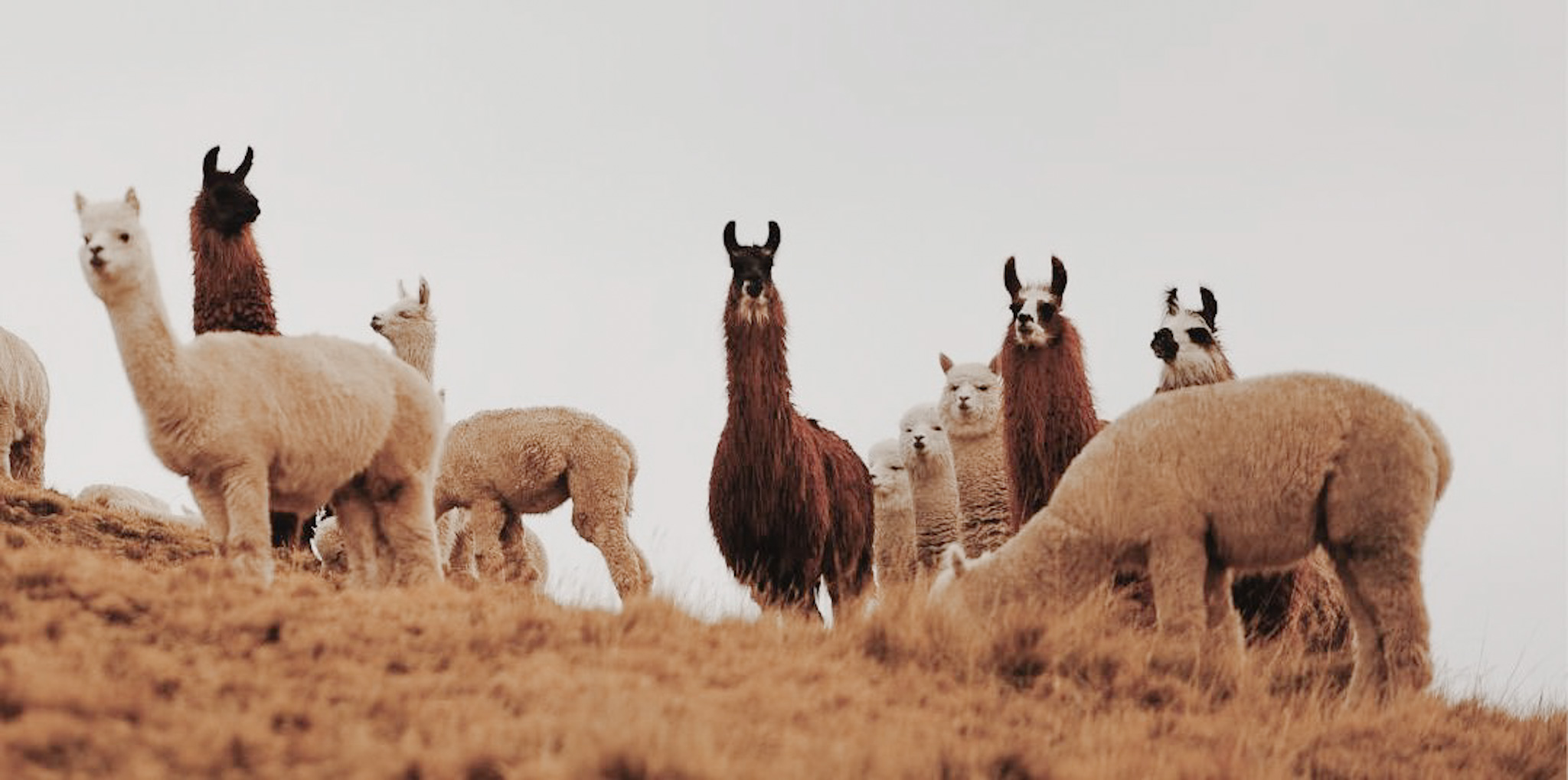Llama definition is - any of a genus (Lama) of wild or domesticated, long-necked, South American ruminant mammals related to the camels but smaller and without a hump; especially: a domesticated llama (L. Glama) descended from the guanaco and used. Lama, Tibetan Bla-ma (“superior one”), in Tibetan Buddhism, a spiritual leader. Originally used to translate “guru” (Sanskrit: “venerable one”) and thus applicable only to heads of monasteries or great teachers, the term is now extended out of courtesy to any respected monk or priest.
Sandisk usb devices driver download for windows 10. Introduction
This blog acts as an easy reference point for documentation and other blogs related to the use of SAP Landscape Management (LaMa) Automation Studio. See the list at the bottom of this page.
What is Automation Studio? This is a functionality within SAP LaMa that allows customers to easily extend, customize, modify, or even replace existing workflows within the solution. You can also easily integrate other tools with LaMa using Automation Studio.
The table below lists some of the customization types that are supported with automation studio: A-link 3gu usb modem driver download for windows 10.
| Extension | Description |
| Custom hooks | Custom specific functionalities to extend predefined actions, for example, run cleanipc each time you stop a system. |
| Custom operations | Custom specific action buttons to define your own operations, for example, create restart HostAgent operation. |
| Custom notifications | Custom specific definitions, when you want to receive a notification, for example, receive message for failed activities. |
| Custom processes | Custom specific process chains, to combine operations, for example, change profile parameter and re-start the instance. |
| Custom provisioning processes | Custom specific process for system provisioning, for example, backup/restore via script. |
| Custom tabs | Custom specific tabs to access further tools and home pages within LaMa, for example, including SAP help into LaMa. |
| Custom links | Custom specific external applications can be called via custom links, for example, call NWA from LaMa. |
| Custom properties | Custom specific properties like username of custom instances, for example, username. |
| Custom instances | Custom specific non-SAP applications can be added, for example, add mail server to LaMa. |
| Custom dependencies | Custom specific dependencies between systems, for example, start system x before system y. |
Example of Automation Studio Visual Editor.
Use Cases
The use cases are numerous but here are a few that our customers have implemented (or are in the process) with Automation Studio.
- Stop/Start for OS patching
- Custom Provisioning
- SAP Profile Parameter Change
- nZDM Process
- Scheduled Automation (e.g. End-to-End Refresh)
- Automated OS Patching
- Mass OS level password changes (sapadm, <sid>adm etc.)
- SAP Host Agent Updates
- OS version upgrades
- Automated suspend of cloud instances (e.g. application servers)
- Integrate HA clustering software with SAP LaMa (cluster commands executed part of LaMa operations)
List of Documentation/Blogs
| 1. | Automatic Patch Management |
| 2. | SAP HANA Replication Status based on SAP HANA HA/DR Hook |
| 3. | How to use SAP Landscape Management custom validations |
| 4. | Diagnostics Agent provisioning with LaMa |
| 5. | Automation SAP Kernel Upgrade Maintenance Using LaMa |
| 6. | [GERMAN] Kundenspezifische Betriebsprozesse managen mit SAP Landscape Management (LaMa) |
| 7. | How To Integrate SUSE LINUX Enterprise High Availability Extension 12 with SAP Landscape Management 3.0 |
| 8. | Custom ASE Database Refresh |
| 9. | Outgoing API Calls from LaMa |
| 10. | Transfer Parameters of Custom Operation or Hook in LaMa |
| 11. | SAP LaMa Automation Studio Official Guide |
| 12. | RFC Operations with LaMa |
As more blogs and documentation becomes available, they will be added to the above list.
The llama (Lama glama) is a large camelid that originated in North America about 40 million years ago. Llamas migrated to South America and Asia about 3 million years ago. By the end of the last ice-age (10,000 – 12,000 years ago) camelids were extinct in North America. As of 2007, there were over 7 million llamas and alpacas in South America and due to importation from South America in the late 20th Century there are now over 100,000 llamas and 6,500 – 7,000 alpacas in the US and Canada.
The term Llama is sometimes used more broadly, to indicate any of the four closely related animals that make up the South American branch of the family Camelidae: the true llama, the vicuña, alpaca and guanaco.
Differentiating characteristics between llamas and alpacas are that llamas are larger and have more elongated heads. Alpacas also have a more luxurious wool than llamas. The most apparent visual difference between llamas and camels is that camels have a hump or humps and llamas do not.
Llamas were used as a pack animal by the Incas and other natives of the Andes mountains. In South America llamas are still used for beasts of burden, fibre production and meat.
Llama Characteristics
The height of a full-grown, full-size llama is between 5.5 feet (1.6 metres) to 6 feet (1.8 metres) tall at the top of the head. Llamas can weigh approximately between 280 pounds (127 kilograms) and 450 pounds (204 kilograms). At birth, a baby llama (called a cria) can weigh between 20 pounds (9 kilograms) to 30 pounds (14 kilograms).
Llama ears are rather long and slightly curved inward, characteristically known as banana shaped. There is no dorsal hump. Feet are narrow, the toes being more separated than in the camels, each having a distinct plantar pad. Their tail is short and their fibre is long, woolly and soft.
Below are the general characteristics of a llama:
Average Life Span: 15 – 20 years Average Gestation: 331 – 359 days Number of Offspring: Usually single births Weaning: 5 – 6 months Average Weight: 200 – 400 lbs Average Height: 4 feet – 4 feet 5 inches at shoulder height – 5 feet – 5 feet 6 inches at head height. Sound: Just a gentle hum, however, when they are upset or frightened they can make a shrill alarm sound. Temperament: Calm, friendly, slightly shy and very intelligent. Health: Few vet problems; worming – 2 or 3 times a year; vaccination against clostridial diseases and tetanus once a year. Land requirement : Maximum 4 – 6 per acres. Shelter: Although very hardy, llamas do need access to a field shelter to protect them from bad weather elements. Fencing: Standard stock fencing. Feeding: Grazing during the summer. In winter, grazing supplemented with hay and a small hard feed daily. Llamas need fresh water available at all times. Shearing: As with sheep, llamas require shearing through summer to prevent heat stroke. Stomach Compartments: 3 Toes per foot: 2 Name for baby llama: Cria
Llama Behaviour
The Llama is a very intelligent animal and very easy to train. In just one to five repetitions they will learn and remember many skills. Llamas can be trained to do lots of things such as accept a halter, being led on a lead and they can be trained to get in and out of a vehicle, and they can also be trained to pull a cart or carry a pack. Llamas are very sociable animals but they do need the companionship of their own kind.
Llamas are a very gentle, shy and a very curious animal. Llamas are calm in nature and have common sense, which make them easy for anyone, even children to handle. Llamas are very enjoyable animals and they are fun to do things with, however, most llamas do not seek affection and they prefer not to be handled excessively.
Llamas communicate with each other by ear position, body language, spitting and humming. Llamas usually only spit at other llamas to establish dominance and do not spit at people. The habit of spitting is a defence mechanism. However, usually, a llama would prefer to run away than to confront their assumed aggressor, and is not always a frequent occurrence. That is believed to be due in part to their shy disposition.


The sound of the llama making groaning noises or going ‘mwa’ is often a sign of fear or anger. If a llama is agitated, he will lay his ears back. One may determine how agitated the llama is by the materials in the spit. The more irritated the llama is, the further back into each of the three stomach compartments it will try to draw materials from, for its spit.

When correctly reared spitting at a human is a rare thing. Llamas are very social herd animals, however, and do sometimes spit at each other as a way of disciplining lower-ranked llamas in the herd. A llamas social rank in a herd is never static. Llamas can always move up or down in the social ladder by picking small fights. This is usually done between males to see who becomes alpha.
Llama fights are visually dramatic with spitting, ramming each other with their chests, neck wrestling and kicking, mainly to knock the other off balance. The female llamas are usually only seen spitting as a means of controlling other herd members.
Llama Reproduction
When female llamas are 12 to 18 months of age they are ready for their first breeding. The male llama reaches his sexual maturity approximately 18 to 24 months of age. Llamas do not have a heat cycle, however, they are induced ovulators. Llamas can be bred any time of the year. Fifty days is the average gestation time.
A single baby, called a ‘cria’ is normally born without assistance. Crias are born in the daylight hours from a standing position and is usually up and nursing in about 90 minutes. The average birth weight of a cria is around 18 to 35 pounds. Rarely do twins occur. The weaning time for the cria is usually 5 months old, depending on the overall health.
Llama Sounds
Llamas being herd animals communicate with a variety of sounds.
Llama Humming
Lamar Odom Khloe Kardashian
This sounds similar to a person humming and is the main method of communcation. Llamas hum, unlike humans, when they are tired, distraught, curious or worried. Mothers may also hum to greet their new baby. The humming sound is used for many different reasons. Hold your mouse on the picture to listen to a Llama humming sound.
Llama Clucking
This sounds like a person clicking their tongue from the roof of their mouth to the bottom of their mouth. Llamas often hold back their ears when they do this and seem to do this when greeting new llamas or flirting with the female llamas.
Lorenzo Lamas 2020
Llama Orgling
This sounds like a person gargling. This sound is made by the male when approaching a female for breeding and will continue until the copulation is complete, which can be anywhere from 20 minutes to an hour.
Llama Alarm Call
This call is made when the llama is feeling threatened or startled by something . It is a loud, high pitched rhythmic sound. Being herd animals, this call is used to alert the others in the herd when one spies a predator.
Lama Animal
In the wild, llamas travel in herds. When one of them spy a predator they make an alarm call to warn others. If your llamas are making an alarm call, go and investigate. Maybe what they are seeing may not be a threat, however, they are seeing something.
Dalai Lama Quotes
More Fascinating Animals to Learn About
